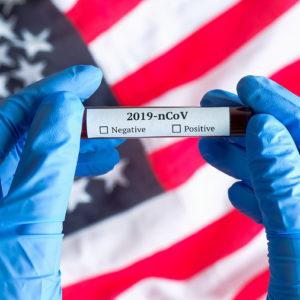It’s hard to get a straight story on COVID statistics once politicians and the media get involved, and they have been driving this fact-adjacent narrative for almost a year now. Their non-stop scare-mongering, combined with a persistent lack of context, has turned half of us into quivering cowards, while the other half ignores legitimate warnings. Last March, we heard about the case fatality rate. The World Health Organization put it at three percent, but some media outlets reported case fatality rates above 10 percent. By comparison, the case fatality rate for the common flu is a mere fraction of one percent.
But in March very few people were being tested, and those who were tested tended to be sick enough to be hospitalized. Because health officials weren’t testing people randomly, the case fatality rates were biased upward. The whole exercise was akin to estimating the incidence of alcoholism in the general population by taking a survey at an AA meeting.
By April, the media were feeding people daily reports on mounting COVID deaths. Numbers with lots of zeros framed every screen, but the missing context was the number of people who died on a typical day before COVID.
Before COVID, almost 8,000 Americans died daily. The average daily U.S. COVID deaths since April is around 1,300, or around one-sixth of the number of deaths we would expect in the normal course of events. The lack of context led people to believe that thousands of deaths per day were something out of the ordinary. More people were dying to be sure, but people’s shocked reactions were due less to the number of COVID deaths than from their being unaware of how many died each day in the first place.
By mid-April, pictures of exponential growth were everywhere. But every disease outbreak shows exponential growth in the beginning. And every disease outbreak also shows a peak and decline in due course. Without that context, the lesson people took was that we’d all be infected, and likely dead, in short order.
By May, COVID deaths were falling, which undermined the steady diet of media-driven doom and gloom. Increased testing meant that more cases were being discovered, so the media shifted, predictably, from breathlessly reporting daily deaths to breathlessly reporting daily infections.
But as was the case in March and April, context mattered in May. There was little discussion of what “case” meant. A case could be anything from someone on a ventilator to someone showing no symptoms at all. Early data indicated that around 80 percent of COVID cases didn’t require hospitalization. The impression we were left with was that each additional case was one more person at death’s door.
In May and June, although the number of new COVID cases steadily rose, the percentage of tests coming back positive declined, indicating that the rising case numbers were due less to increased cases than to increased testing. In November, daily cases were setting records, but this was largely due to increased testing. The fraction of tests coming back positive in November was on par with what the U.S. experienced in mid-May.
What was responsible for this persistent lack of context?
Politicians had to lock things down in order to appear to be “doing something.” But people wouldn’t tolerate a lockdown if they thought the virus a mild threat. That meant politicians had an incentive to convince people that, were it not for the lockdowns, millions would be dead. The media, ever on the lookout for more customers, had its usual incentive to sensationalize whatever data it could find. Driving all of this were the people who paid enough attention to be scared, but not enough to understand.
No one conspired to achieve this outcome. Politicians, the media, and people simply responded to the incentives before them. The outcome was entirely predictable. Remember that next time a reporter breathlessly struggles through statistics he doesn’t understand, and when politicians start telling you that you need to give up more freedom for some ill-defined safety. Because chances are they are concerned about themselves a lot more than they are concerned about you.

